- Home
- Deborah Harkness
The World of All Souls Page 7
The World of All Souls Read online
Page 7
Despite humans’ capacity for violence and denial, their pursuit of knowledge and new worlds has nonetheless driven progress. Diana was in awe of the many talented humans she met in the sixteenth century. From the adventures of the legendary Walter Raleigh to the wonders of John Dee’s vast library, to Mary Sidney’s beautifully painted laboratory in Baynard Castle, Diana was able to step into the lives of influential historical figures whose impact she had previously studied only from afar.
Their powerful desire for knowledge led humans away from religion to more scientific experiment, through the Age of Enlightenment to the modern research that is now Matthew’s world of work. But rational scientific thought did not lessen the human fear and denial of other creatures. Rather it brought an even stronger rejection of magic and supernatural power into the world, driving creatures ever more into the shadows and diminishing their numbers. Modern warfare, with its massive bombing campaigns and the development of automatic weaponry, has also been particularly damaging to vampire populations.
Now that Diana and Matthew have discovered the secrets of the Book of Life, however, the balance of humans in the world of creatures could change.
See also:
CHARACTERS: John Dee, Walter Raleigh, Rudolf II, William Shakespeare, Mary Sidney, Elizabeth Tudor
ORGANIZATIONS: The Knights Templar, the Order of St. Michael
Vampires
He was, quite simply, the most breathtaking creature I had ever seen—supernatural, preternatural, daemonic, or merely human.
Characteristics
While humans are the ultimate prey animals, vampires are the consummate predators. Were it not for human aggression and the devastating Vampire Wars of the late classical and early medieval periods, vampires might have become the dominant population on earth.
The common warmblooded opinion of vampires is that they are cold, single-minded, and dangerous—when a witch feels a vampire stare, it’s an icy, focused sensation—whereas vampires themselves are proud of their elegance and discipline. They are charming yet have a tendency to unveil a darker side when they smell blood. Vampires are physically stronger and faster than humans or witches, but they don’t have supernatural powers. They are usually stunningly beautiful, and their bodies are very efficient; they run cold and don’t need to eat frequently; their hearts don’t beat often; they breathe very slowly and don’t need much sleep. This is because they aren’t fully alive. They are very difficult to kill, because their blood has properties to heal their bodies quickly after injury, but they are not immortal. They can be killed through massive blood loss, by causing them to bleed out entirely without replacing the blood, or by burning.
Vampires believe that they are at the top of the creature food chain. This literally is true, because they feed off all warmblooded creatures, including humans, cows, deer, cats, rats, birds, and whatever else comes to hand. They avoid feeding off daemons and witches and do not consume wolves, horses, or dogs because they value their companionship. Daemons might make an occasional treat, but their unpredictable taste can lead to disappointment.
Once a vampire has been made and the maker is convinced that the newly minted vampire is now self-sufficient (the initial transition period is a difficult one for newborn vampires), the vampire begins to establish a new identity. It is vital that vampires cultivate passions and interests, or else they are in danger of falling victim to boredom and depression during their lengthy existence. This means they are often found in careers that reward long-term thinking, such as investment banking, art collecting, scientific research, and real estate. Science in particular suits extended study and patience, and its solitary nature enables vampires to remain unrecognized except by their closest colleagues. This makes a life that spans centuries much easier to negotiate. Vampires used to be found studying alchemy, anatomy, and electricity; now they gravitate toward particle accelerators, the human genome project, and molecular biology.
Because they live so long, vampires are adept at a kind of shape-shifting, moving to new countries and acquiring new language skills and identities, new jobs, new houses, new friends and lovers. This is how they not only survive but thrive. Matthew Roydon is only one of Matthew de Clermont’s many names. Modern methods of fixing identities have not been kind to vampires, but they are learning to cope using identity theft and other measures. And they can always rely on humans’ capacity to deny what they believe is the impossible.
Genetics and Reproduction
Genetically, vampires are distinct from the human and daemon populations because they possess twenty-four chromosomal pairs (as witches do). Vampires are made, not born, from human stock. There are long-standing cultural prohibitions against turning a witch or a daemon—considered higher life-forms than humans—into a vampire. Humans, however, are perfect candidates.
Vampires select potential humans according to their needs at the time. Some need mates. Others need soldiers or assassins. Some need skilled servants. Others are looking to fill out a family. Once the humans are selected, the vampire sire or maker drains the human of all its blood. The moment the heart stops beating, the vampire forces the human to drink enough of the maker’s blood to bring the heart—and the rest of the human’s mortal body—back to life. Vampires call this process rebirth. Vampires thus have two birthdays (their mortal, human birthday and their vampire rebirthday), and two astrological signs. Vampire genealogy is more complicated than that of witches or daemons, because they have blood relations on three sides: their human mother, their human father, and their vampire maker.
Once made, vampires experience up to five years of vampire infancy. During this time they are under the almost constant supervision of their maker or another powerful member of their family while growing accustomed to their new talents and abilities. Vampire blood brings ordinary human genetics to its greatest, most extraordinary potential, conveying preternatural beauty, longevity, strength, height, and senses to the former human. You will rarely encounter an ugly vampire. They can see in the dark, hear through walls, jump high (though they can’t fly), run fast, and lift extremely heavy objects. Vampires are the creatures you gape at when you’re at the theater because they are too perfect to be believed, with glossy hair, perfect skin, long legs, and beautiful features. You do see old vampires, however, because some vampires can’t bear to part with valued human servants when they age. Instead they strike a lucrative deal that allows the servant to accrue a large bank account and long life in exchange for continued service. The de Clermonts have collected several of these servants over the years, such as Ysabeau’s steadfast housekeeper Marthe, as have most of the large vampire clans.
Based on his genetic research, Matthew believes that the influx of a vampire’s blood forces hundreds of spontaneous genetic mutations in every cell of the body, and it is those mutations that might be leading to their extinction. Modern vampires now find it difficult to make new vampires, as evidenced by discoveries of bloodless corpses, which are their botched attempts at resurrection.
Though resistant to the disease that affects warmbloods, vampires are subject to a genetic illness called blood rage. Once known as the Vampire Curse, this illness leads to hyperaggression and an insatiable desire to hunt and kill. While all vampires need to hunt for physiological and psychological reasons, vampires afflicted with blood rage are unable to stop themselves from doing so. During the Vampire Wars of antiquity, vampires with blood rage were highly desirable and efforts were made to raise armies of blood-rage vampires. In the aftermath of the wars, however, vampires deliberately exterminated others who exhibited signs of the disease. Ysabeau de Clermont, Matthew’s mother, was made a vampire by a sire with blood rage. She escaped the pogroms, and her mate, Philippe de Clermont, kept her condition a secret. He also kept secret the fact that two of Ysabeau’s children, Matthew and Louisa, inherited the active disease from her. This ethnic cleansing within the vampire population is believed to have been large
ly successful, with blood rage considered an extinct disease like smallpox, but there are still dangerous carriers at large, as Matthew knows only too well. No one is sure exactly why some vampires get blood rage and others do not, and Matthew has been working on the problem since the 1960s.
As Diana and Matthew began to uncover the secrets of the Book of Life, they discovered that the Vampire Curse may also bring a surprising benefit. Though it seems destructive, blood rage actually holds the key to a vampire’s ability to produce natural, as opposed to made, children. The first hints were uncovered in an ancient story Ysabeau related about a witch who gave birth to a vampire baby. The baby needed to drink blood in order to live, but the witch’s family refused to feed her anything except milk and so she died of starvation. When Diana conceived the twins with Matthew, it was clear these stories were not mere folklore. The genetic mystery of both their children was finally unveiled when Diana read about the ancient unions between weavers and blood-rage vampires in the complete Book of Life, unions that resulted in the birth of children known as Bright Borns with characteristics of witches and vampires.
Customs and Lore
Most of the common lore about vampires, which was shaped by human fears, is entirely wrong. Vampires can go out in sunlight; holy water has no effect on them; they can be killed by all kinds of bullets, not just silver ones; they do not have fangs; staking them in the heart will be difficult given their strong skin; and they can consume more than human blood. Vampires are strongly drawn to wine, for example, and can eat raw meats, nuts, and berries, something Diana had to research when she was wondering what on earth to cook Matthew on one of their first dates. At least she could rely on him to bring a good bottle of wine.
When feeding, vampires take blood from their prey’s arteries or veins after tearing through its flesh with sharp teeth. Vampires do not have fang straws, as humans believe. While they will often drain an animal food source of its blood and thereby kill it, they try not to kill their human prey as that raises too many questions. Instead they use a bit of their own blood to anesthetize and confuse the victim, if they are feeling charitable. Unfortunately, fear is extremely appetizing to vampires, and they would prefer to drink from humans they have hunted and chased for a while. Over time vampires have learned that feeding on drug addicts, drunks, and other “invisible” humans is easier, because they can skip the niceties and get right down to the meal. Even if the prey tells friends that a vampire fed off him, no one will believe him.
Vampire blood can keep victims in thrall and, with its curative properties, can also be used to heal human wounds. Vampires also gain knowledge of another creature by drinking its blood; they see the creature’s memories through it, which is how Andrew Hubbard controls his flock in London. Vampires take blood from the neck only if it’s from strangers or subordinates; it is an aggressive act. They bite their mate near the heart, from the “heart vein,” as a means of achieving intimacy. To drink from their lover is to know that nothing is hidden, and this was a poignant and powerful turning point in Diana and Matthew’s relationship. Vampire fledglings are fed from the maker’s wrist or elbow.
The single greatest need vampires have, other than hunting and feeding themselves, is to find their vampire mate. Vampires are drawn to their mates through a combination of affinity and chemical compatibility. The bond between mates is irresistible and lasts for a lifetime. The intensity of chemical and emotional responses to mating make it difficult for vampires to let their partners out of their sight, and vampire widows or widowers often attempt suicide to escape the physical and mental anguish associated with the loss of their beloved. Ysabeau’s pain when Philippe died almost drove her mad, and the length of the life still ahead of her is haunted by her yearning and bereavement. Some vampires do mate again, though this is rare. Vampire mates may be other vampires, or they may be humans. In the case of human mates, difficult decisions must be made about whether to turn them into a vampire. Vampires are extraordinarily protective, and possessive, of their mates and mark them with the vampire’s scent to indicate ownership. A vampire will never touch another’s mate without permission, unless they are hostile and willing to face the possibly deadly consequences.
Vampires have a strong sense of family that is similar to that of wolf packs. The head, or sire, of a vampire family—called a clan—has absolute authority. Etiquette requires that this head of the family be addressed as Sieur, as Philippe, Baldwin, and later Matthew all are. The clan’s sire is almost always male, though there have been some famous exceptions, such as Miriam Shephard. The sire’s mate occupies the second highest rank and authority in a vampire clan. When a sire is not mated, that honor can be bestowed on another. Vampire clans are extremely hierarchical, and disobedience is not tolerated. Insubordination often leads to death. In some cases large vampire families are divided into scions with semiautonomous sires who report back to the main clan sire. The most famous vampire clan is the de Clermonts, and Philippe de Clermont was the most highly respected sire in vampire history. The term “sire” can also refer to the vampire who gave his or her blood to create another, though “maker” is more commonly used among vampires.
In addition to making full-blooded vampire children, vampires also have a tradition of adoption. Being the adopted, or blood-sworn, child of a vampire accords you all the rights and privileges of belonging to a clan without having to become a fully fledged vampire. Bloodlines are extremely important in vampire culture, and even the blood-sworn child of a great vampire sire like Philippe de Clermont would be of higher status than the full-blooded child of a lesser creature. According to legend, a vampire’s blood vow sings for a year and a day. All vampires can hear it, but the song is particularly loud and clear to those who carry the maker’s blood in their veins. Thus, before Philippe’s bloodsong on Diana faded, one of his full-blooded children had to acknowledge it; otherwise no other vampire would be obligated to honor her as a true de Clermont. Luckily for Diana, Verin de Clermont kept her promise to her father and on December 6, a year and a day after Philippe’s vow was made, she recognized Diana’s position in the family as Philippe’s blood-sworn daughter.
Myth and History
No one knows the identity of the first vampire or how he or she was made. This question of heritage is what all the creatures are seeking in the missing Book of Origins. Vampires were once far more numerous and potent than in the past few hundred years, though their slow, steady decline began during the Crusades. Vampires like Gerbert d’Aurillac still remember the good old days fondly, when vampires ruled the earth and humans, witches, and daemons were afraid of them. The Vampire Wars of classical antiquity, of which Philippe de Clermont was a veteran, and the early medieval period were both ages when vampires seemed to be in the ascendancy.
Around the time of the Crusades in the eleventh century, Philippe de Clermont set out for the Holy Land to establish a safe haven for creatures. The racial and religious tensions between humans, as well as the clashes between daemons, vampires, and witches, however, made that dream an impossibility. Sadly, the dangers from unwanted human attention that triggered the formation of the Congregation enforced the segregation of creatures that Philippe had hoped to break down. It also forced them to stay out of the limelight of human affairs. The difficulties of wielding overt power had been underscored when ambitious, scheming vampire Gerbert d’Aurillac was elected Pope Sylvester II in A.D. 999. His election inevitably caused complications, and it took the rare cooperation of vampires and witches to give him a convincing death and move him off the world stage. It was Gerbert’s antics as pope that convinced most creatures to agree to the covenant’s restrictions on an active life in human politics and religion. But vampires soon learned that they could control things just as effectively from behind the scenes. Philippe regrouped in this new world order and launched first the Knights Templar and then the Knights of Lazarus, a shadowy, far-reaching de Clermont vampire network that could hold sway with all
contemporary powers.
Human myths and beliefs surrounding vampires and their history are driven by the prejudices of religion and politics in particular periods, as well as by unexplained diseases and crime, with certain notorious figures personifying the horror and fear these creatures have incited. The modern idea of the sophisticated, aristocratic vampire became prevalent in the eighteenth and nineteenth centuries, first with the publication of The Vampyre by John William Polidori and later by Bram Stoker’s novel Dracula in 1897. As Diana Bishop said, Dracula is “the human myth about vampires.”
Stoker’s Dracula shares a name with the fearsome historical figure of Vlad III, the Impaler, from the house of Drăculeşti, and son of Vlad the Dragon. He gained his reputation in the mid-fifteenth century fighting off the invading Ottomans, and is seen as a hero in Romania and Bulgaria. German pamphlets of the time, however, spread Vlad’s reputation for extreme cruelty with grisly details of what he did to his enemies. Vlad’s preferred method of torture and death was impalement. Vlad III has taken his place in modern popular culture as the Dracula and the most notorious vampire of all. Just over a century after Vlad, the murder trial of Hungarian serial killer Erzsébet Báthory, or Elizabeth Bathory (who featured in Godfrey de Clermont’s letter to his father informing him of Benjamin Fuchs’s relationship with her), sparked numerous human legends about the vampire Blood Countess. A flood of witnesses testified to her crimes, relating specifically to the murder of young girls, but Elizabeth was spared the death penalty due to her family and aristocratic standing. She was held at Čachtice Castle in solitary confinement, bricked into rooms until her death was finally reported in 1614. Peter Stubbe, called the Werewolf of Bedburg, was another notorious serial killer in the sixteenth century, a farmer who terrorized his community in Germany, reputedly killing and devouring his victims. Diana read a pamphlet in Tudor London that sensationalized his crimes (she believed he must have been a vampire), and the brutality of his execution showed how much fear Stubbe incited in the human population.

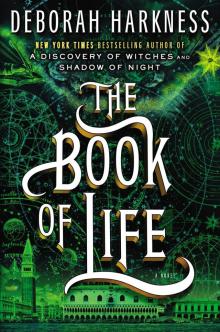 The Book of Life
The Book of Life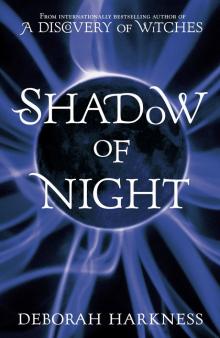 Shadow of Night
Shadow of Night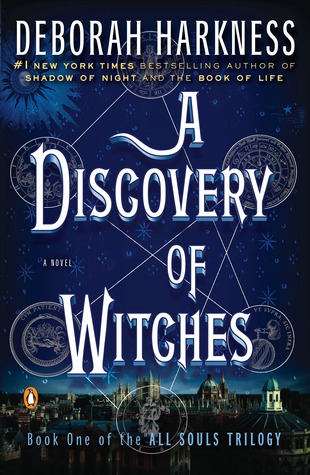 A Discovery of Witches
A Discovery of Witches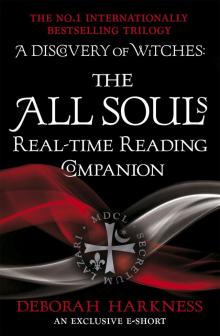 The All Souls Real-Time Reading Companion
The All Souls Real-Time Reading Companion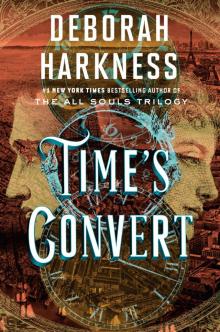 Time's Convert
Time's Convert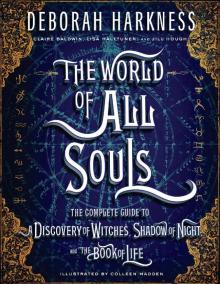 The World of All Souls
The World of All Souls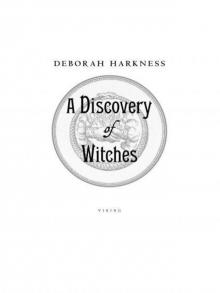 A Discovery of Witches: A Novel (All Souls Trilogy)
A Discovery of Witches: A Novel (All Souls Trilogy) Shadow of Night: A Novel
Shadow of Night: A Novel